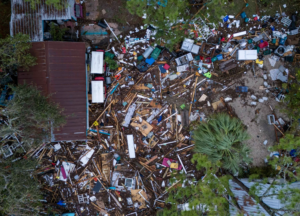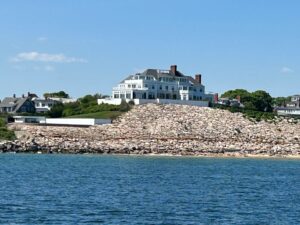We all have grown up with the painful awareness that there were always areas in our towns that were less desirable than others to build a house. We used terms like the wrong side of the tracks, low country, or even outrightly fearful descriptions like flood zones. The admonitions in the Bible were to build your house on the rock, on solid foundations, rather than shifting sands, and to seek higher ground.
Those of us with choices do precisely this and there are costs and benefits. Hurricane Helene that just came ashore in the Big Bend area of Florida is a chilling lesson in whether we are soberly aware of the situation. The massive and predicted storm surge swallowed millions of homes all along Florida’s west coast. We might build “hurricane proof” houses and build them above expected high water to accommodate storm surges, but have we built them fully hardened to withstand the battering ram effects of objects from others’ homes who didn’t build to our standards.
Everything would have been fine if everyone had built to these standards, but they did not. Those lower quality homes often without insurance fall apart and their debris fields become battering rams on all the neighboring dwellings. There have been some spectacular videos posted of homes on the east coast of the Carolinas that were once protected by high ground, but that ground was eroded away after decades of storms. To make matters worse, people who should have set standards in these areas did not. Take a closer look for yourself at this: https://www.nytimes.com/2024/10/03/climate/north-carolina-homes-helene-building-codes.html?unlocked_article_code=1.PU4.9y7U.cEDQx-j8SzRD&smid=url-share
This summer, we took our boat from Mystic, Connecticut, to Watch Hill where Taylor Swift’s mansion stands in stark contrast to her neighbors with about $1 million in riprap protecting the hillside behind it. You can already see her neighbors’ cliffs eroding away … slowly of course, but eventually the result will be either they too put riprap in or lose their homes to the unrelenting forces of nature. Here is a picture we took of Taylor’s home illustrating my point.
It is a bit ironic that we saw another example of this at the restaurant last night. A segment of another dock had broken free and become impaled on the dock at this restaurant as you can see in the picture below:
So, where is higher ground? Can we really protect ourselves from the whims of Mother Nature? Or are we playing Russian Roulette and eventually there’s going to be a bullet in the chamber? And is it right to think that we are owed protection from the government for taking the risks?
As you follow this intellectual trail to its roots, you start to realize we are all living in this Russian Roulette game in large part because of our affluent lifestyles living in large homes built in places that should have never been approved. But here we are in this gigantic maze of risk-profiles stretching seemingly everywhere. As you drive through most of the country, you see miles and miles of miles and miles of uninhabited land and then, when we get to our seaside destination, we see mounds and mounds of people and structures built precariously close to statistically improbable but possible total financial ruin, and we delude ourselves into thinking that our insurance policies will protect us.
Then, when the companies we counted on file bankruptcy because they too did not cover their risks completely, we are shaken into the harsh reality that we were deluded into thinking we had achieved higher ground.
Based upon the widespread destruction we just saw in an area that did not get hurricane winds but did get the storm surge, delusion is widespread for both the rich and the poor.



Great article.
Unfortunately, it’s the after effect that always showcases the mistakes and ill preparations prior to a Hurricane, much less than a Cat 4.